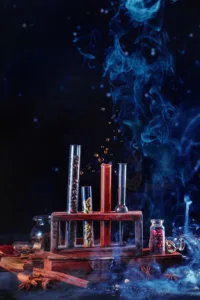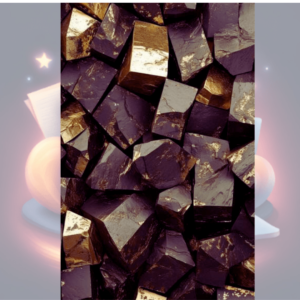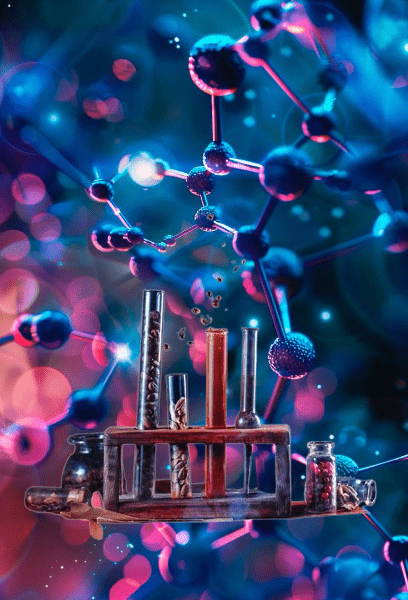Table of Contents
Toggle- Metals and Non-Metals: Full Chapter Class 10
- Physical Properties of Metals(Metals and Non-Metals: Full Chapter Class 10):
- Chemical Properties of Metals:
- Chemical Properties of Non-Metals:
- Metalloids(Metals and Non-Metals: Full Chapter Class 10):
- Reactivity Series:
- Uses of Metals(Metals and Non-Metals: Full Chapter Class 10):
- Uses of Non-Metals:
- Alloys(Metals and Non-Metals: Full Chapter Class 10):
- Corrosion(Metals and Non-Metals: Full Chapter Class 10):
- Extraction of Metals:
Metals and Non-Metals: Full Chapter Class 10
Introduction to Metals and Non-Metals:
Classification of Elements
Elements are broadly classified into three categories based on their physical and chemical properties:
- Metals
- Non-Metals
- Metalloids
Importance in Daily Life and Industry
- Metals: Metals are essential in our everyday life and various industrial processes. They are used in construction (steel, iron), transportation (aluminum in aircraft, steel in cars), electrical wiring (copper), jewelry (gold, silver), and many household items (utensils, tools).
- Non-Metals: Non-metals also play a crucial role in daily life. For example, oxygen is essential for respiration, while carbon is the basis of organic life. Non-metals like nitrogen are used in fertilizers, and chlorine is used for water purification.
- Metalloids: Metalloids have properties intermediate between metals and non-metals. They are used in the semiconductor industry (silicon in computers and smartphones).
Metals and Non-Metals in Detail(Metals and Non-Metals: Full Chapter Class 10)
Metals:
- Physical Properties: Malleability, ductility, luster, high density, good conductors of heat and electricity.
- Chemical Properties: Reactivity with oxygen (forming basic oxides), displacement reactions, and reactivity with water (forming hydroxides and hydrogen gas).
Non-Metals:
- Physical Properties: Brittle in solid state, non-ductile, usually not shiny, poor conductors of heat and electricity.
- Chemical Properties: Form acidic oxides, high electronegativity, reactivity with metals (forming ionic compounds).

Metals and Non-Metals: Full Chapter Class 10
Physical Properties of Metals(Metals and Non-Metals: Full Chapter Class 10):
- Lustrous: Metals have a shiny appearance.
- Examples: Gold, Silver.
- Malleable: Metals can be hammered into thin sheets.
- Examples: Aluminum foil.
- Ductile: Metals can be drawn into wires.
- Examples: Copper wires.
- Good Conductors: Excellent at conducting heat and electricity.
- Examples: Silver, Copper.
- Sonorous: Metals produce a ringing sound when struck.
- High Density and Melting Point: Generally, metals have high density and high melting points.
- Exceptions: Sodium and Potassium.
Physical Properties of Non-Metals(Metals and Non-Metals: Full Chapter Class 10)
- Non-Lustrous: Non-metals are generally dull (exceptions: iodine).
- Non-Malleable and Non-Ductile: Non-metals are brittle.
- Poor Conductors: They are poor conductors of heat and electricity (exceptions: graphite).
- Low Density and Melting Point: Non-metals have relatively low density and melting points.
Chemical Properties of Metals:
Chemical Properties of Metals
- Reactivity with Oxygen:
- Formation of Oxides: Metals react with oxygen to form metal oxides. For example, when magnesium burns in oxygen, it forms magnesium oxide (MgO).
- Basic Oxides: Most metal oxides are basic and can react with acids to form salts and water. For example, sodium oxide reacts with hydrochloric acid to form sodium chloride and water.
- Reactivity with Water:
- Formation of Hydroxides: Some metals react with water to form metal hydroxides and hydrogen gas. For example, sodium reacts with water to form sodium hydroxide (NaOH) and hydrogen gas.
- Reactivity Varies: Alkali metals (like sodium and potassium) react vigorously with water, while others (like gold and platinum) do not react with water at all.
- Reactivity with Acids:
- Formation of Salts and Hydrogen Gas: Metals react with acids to form salts and hydrogen gas. For example, zinc reacts with hydrochloric acid to form zinc chloride (ZnCl2) and hydrogen gas.
- Example Reaction: Zn+2HCl→ZnCl2+H2.

Metals and Non-Metals: Full Chapter Class 10
- Displacement Reactions:
- More Reactive Metals Displace Less Reactive Metals: In displacement reactions, a more reactive metal displaces a less reactive metal from its compound. For example, zinc can displace copper from copper sulfate solution.
- Example Reaction: Zn+CuSO4→ZnSO4+Cu.
- Reactivity Series:
- Order of Reactivity: Metals can be arranged in a reactivity series based on their tendency to react. For example, potassium and sodium are highly reactive, while gold and platinum are least reactive.
Chemical Properties of Non-Metals:
- Reaction with Oxygen:
- Non-metals react with oxygen to form acidic or neutral oxides.
- Example: C+O2→CO2.
- Reaction with Water:
- Non-metals generally do not react with water.
- Reaction with Acids:
- Non-metals do not typically react with acids.
- Reaction with Bases:
- Some non-metals react with bases to form salts.
Examples(Metals and Non-Metals: Full Chapter Class 10)
- Magnesium + Oxygen: 2Mg+O2→2MgO2
- Sodium + Water: 2Na+2H2O→2NaOH+H2
- Zinc + Hydrochloric Acid: Zn+2HCl→ZnCl2+H2
- Zinc + Copper Sulfate: Zn+CuSO4→ZnSO4+Cu
Differences Between Metals and Non-Metals
| Property | Metals | Non-Metals |
|---|---|---|
| Appearance | Lustrous (shiny) | Dull |
| Malleability | Malleable | Non-malleable |
| Conductivity | Good conductors of heat/electricity | Poor conductors |
| State | Solid (except mercury) | Solid, liquid, or gas |
| Reaction with Acids | Produces hydrogen gas | No reaction |
Metalloids(Metals and Non-Metals: Full Chapter Class 10):
Metalloids, also known as semimetals, have properties that are a mix of both metals and non-metals. They are essential in various industries, especially in electronics.
Common Metalloids:
- Silicon (Si)
- Boron (B)
- Germanium (Ge)
- Arsenic (As)
- Antimony (Sb)
- Tellurium (Te)
- Polonium (Po)
Physical Properties:
- Appearance: Metalloids often have a metallic luster.
- Brittleness: They are usually brittle and not malleable like metals.
- Conductivity: Metalloids are semiconductors, meaning they conduct electricity better than non-metals but not as well as metals. This property is temperature-dependent.
- Density and Melting Point: They have densities and melting points that are typically intermediate between metals and non-metals.
Chemical Properties:
- Amphoteric Oxides: Metalloids can form oxides that can act as both acidic and basic, depending on the reacting substance.
- Variable Reactivity: Their reactivity can vary widely depending on the element and the conditions.
Applications:
- Electronics: Silicon and germanium are widely used in semiconductor technology (e.g., computer chips, transistors).
- Alloys: Some metalloids are used to enhance the properties of alloys.
- Glass Production: Boron is used in the production of borosilicate glass, which is heat-resistant.
Examples of Uses:
- Silicon: Used in making computer chips and solar cells.
- Boron: Used in detergents, fire retardants, and glass production.
- Germanium: Used in fiber optics and infrared optics.
Reactivity Series:
- Metals are arranged in decreasing order of reactivity in the reactivity series.
- Highly reactive metals (e.g., potassium, sodium) react vigorously, while less reactive metals (e.g., gold, platinum) are inert.
Uses of Metals(Metals and Non-Metals: Full Chapter Class 10):
- Construction and Infrastructure:
- Steel: Used in building structures, bridges, and infrastructure due to its strength and durability.
- Aluminum: Lightweight and corrosion-resistant, used in window frames, roofing, and other building materials.
- Transportation:
- Aluminum and Steel: Used in the manufacture of cars, airplanes, ships, and trains due to their strength and light weight.
- Titanium: Used in aerospace applications because of its high strength-to-weight ratio and resistance to corrosion.
- Electrical and Electronics:
- Copper: Widely used in electrical wiring and electronic components due to its excellent conductivity.
- Gold and Silver: Used in high-quality connectors and circuit boards due to their superior electrical conductivity and resistance to oxidation.
- Household Items:
- Stainless Steel: Used in kitchenware, cutlery, and appliances due to its resistance to rust and staining.
- Aluminum: Used in packaging (e.g., aluminum foil), utensils, and cookware.
- Jewelry and Ornaments:
- Gold, Silver, and Platinum: Highly valued for their luster, malleability, and resistance to tarnish. Used in rings, necklaces, and other decorative items.
- Healthcare:
- Stainless Steel and Titanium: Used in surgical instruments, medical devices, and implants due to their biocompatibility and strength.
- Mercury: Used in thermometers (though less common now due to safety concerns).
- Industrial Applications:
- Iron and Steel: Used in manufacturing machinery, tools, and heavy equipment.
- Copper: Used in plumbing and heating systems due to its thermal conductivity and resistance to corrosion.
- Energy Production:
- Uranium and Plutonium: Used as fuel in nuclear reactors for electricity generation.
- Aluminum: Used in power lines and transmission cables due to its light weight and conductivity.
Uses of Non-Metals:
- Oxygen (O2):
- Respiration: Essential for breathing in all aerobic organisms.
- Medical Use: Used in oxygen therapy for patients with respiratory issues.
- Industrial Use: Used in steelmaking and in the production of chemicals.
- Hydrogen (H2):
- Fuel: Used as a clean fuel in hydrogen fuel cells.
- Industrial Use: Used in the production of ammonia and in hydrogenation of fats and oils.
- Rocket Propellant: Used as a fuel in space exploration.
- Carbon (C):
- Organic Compounds: Forms the basis of all organic life.
- Fuel: Used as coal, petroleum, and natural gas.
- Industrial Use: Used in the production of steel (as graphite) and in filtration (as activated carbon).
- Nitrogen (N2):
- Fertilizers: Used in the production of ammonia, which is a key component of fertilizers.
- Preservation: Used to preserve food and in packaging to prevent oxidation.
- Cryogenics: Used as a refrigerant in its liquid form.
- Sulfur (S):
- Fertilizers: Used in the production of sulfuric acid, which is a key component of fertilizers.
- Medicine: Used in ointments and creams to treat skin conditions.
- Industrial Use: Used in the vulcanization of rubber and in the production of sulfuric acid.
- Phosphorus (P):
- Fertilizers: Used in the production of phosphate fertilizers.
- Matches: Used in the production of matchsticks.
- Detergents: Used in the production of detergents and cleaning agents.
- Chlorine (Cl2):
- Disinfectant: Used in water purification to kill bacteria and other microbes.
- Bleach: Used in the production of household bleach and disinfectants.
- Industrial Use: Used in the production of PVC (polyvinyl chloride) and other chemicals.
- Iodine (I2):
- Medicine: Used as an antiseptic in wound cleaning.
- Nutrition: Added to table salt to prevent iodine deficiency.
- Photography: Used in the production of photographic chemicals.
Alloys(Metals and Non-Metals: Full Chapter Class 10):
- Definition: A mixture of two or more metals or a metal and a non-metal.
- Examples:
- Brass (copper + zinc)
- Steel (iron + carbon)
Corrosion(Metals and Non-Metals: Full Chapter Class 10):
Corrosion is the gradual destruction or deterioration of materials, usually metals, due to chemical reactions with their environment. It is a natural process that transforms refined metals into more stable compounds such as oxides, hydroxides, or sulfides.
Causes of Corrosion
- Electrochemical Reactions:
- Corrosion often involves electrochemical reactions between the metal and the surrounding environment.
- For example, iron reacts with oxygen and water to form rust (iron oxide).
- Environmental Factors:
- Moisture: The presence of water accelerates corrosion.
- Oxygen: Oxygen in the air or water can react with metals.
- Acids and Salts: Acidic environments or salt (e.g., seawater) can increase the rate of corrosion.
Types of Corrosion
- Uniform Corrosion:
- Occurs evenly across the surface of the metal.
- Commonly seen in metals exposed to the atmosphere over time.
- Galvanic Corrosion:
- Occurs when two different metals are in electrical contact in the presence of an electrolyte.
- The more reactive metal corrodes faster (e.g., zinc corrodes to protect iron in galvanized steel).
- Pitting Corrosion:
- Localized corrosion that leads to the formation of small pits or holes on the metal surface.
- Can be very damaging as it penetrates deeply.
- Crevice Corrosion:
- Occurs in confined spaces where the electrolyte becomes stagnant.
- Common in gaps, joints, or under deposits on the metal surface.
- Stress Corrosion Cracking (SCC):
- Caused by the combined effect of tensile stress and a corrosive environment.
- Leads to the formation of cracks and potential failure of the material.
Prevention of Corrosion
- Protective Coatings:
- Applying paints, varnishes, or coatings to prevent exposure to the environment.
- Example: Painting bridges and ships.
- Galvanization:
- Coating iron or steel with a layer of zinc to prevent rusting.
- Example: Galvanized steel pipes.
- Cathodic Protection:
- Using sacrificial anodes (more reactive metals) to protect the metal structure.
- Example: Protecting pipelines and ship hulls.
- Alloying:
- Adding other elements to metals to improve their corrosion resistance.
- Example: Stainless steel (iron, chromium, nickel) is resistant to rust.
- Corrosion Inhibitors:
- Chemicals added to the environment to reduce the rate of corrosion.
- Example: Inhibitors in cooling systems or boilers.
Impact of Corrosion
- Economic Costs: Corrosion leads to significant economic losses due to the need for maintenance, repair, and replacement of corroded structures.
- Safety Concerns: Corrosion can weaken structures and lead to accidents or failures, posing safety risks.
- Environmental Impact: Corroded materials can contaminate the environment, especially in the case of infrastructure like pipelines.
Extraction of Metals:
- Concentration of Ore:
- Purpose: To remove impurities (gangue) from the ore.
- Methods:
- Gravity Separation: Utilizes the difference in density between the ore and gangue particles.
- Froth Flotation: Used for sulfide ores, where the ore particles are made to attach to air bubbles.
- Magnetic Separation: Used when the ore and impurities have different magnetic properties.
- Extraction of Metal:
- Reduction Process: The concentrated ore is then reduced to obtain the metal. This can be done through several methods:
- Pyrometallurgical Methods: Involve the use of high temperatures.
- Roasting: Heating the ore in the presence of oxygen (e.g., sulfide ores to oxides).
- Calcination: Heating the ore in the absence of oxygen (e.g., carbonate ores to oxides).
- Smelting: The process of extracting metal from its ore by using heat and a reducing agent (e.g., coke).
- Electrolysis: Used for more reactive metals (e.g., aluminum) by passing electric current through molten or aqueous solutions of the ore.
- Reduction by Chemical Reagents: Using reducing agents like carbon or carbon monoxide (e.g., extraction of iron from its oxide using carbon in a blast furnace).
- Pyrometallurgical Methods: Involve the use of high temperatures.
- Reduction Process: The concentrated ore is then reduced to obtain the metal. This can be done through several methods:
- Refining of Metals:
- Purpose: To purify the extracted metal.
- Methods:
- Electrolytic Refining: Using electrolysis to purify metals (e.g., copper, silver).
- Distillation: Used for metals with low boiling points (e.g., zinc, mercury).
- Zone Refining: Used for high-purity applications (e.g., silicon for semiconductors).
Steps in Metal Extraction(Metals and Non-Metals: Full Chapter Class 10):
- Concentration of Ore
- Reduction to Free Metal
- Purification (Refining)
More You Visit For entertainment blog: https://taazakhobor.in/
More you read :
https://deepblogs.net/oracle-interview-questions-most-important-questions-part-1/
https://deepblogs.net/oracle-technical-interview-questions-most-important-questions-part-2/
https://deepblogs.net/oracle-technical-interview-questions-2025/
https://deepblogs.net/class-11-biology-chapter-1-important-questions/
https://deepblogs.net/class-11-physics-chapter-1-important-questions/
https://deepblogs.net/aws-cloud-based-engineering-interview-questions/
https://deepblogs.net/control-and-coordination-complete-chapter/
https://deepblogs.net/oracle-technical-interview-questions-part-3/
